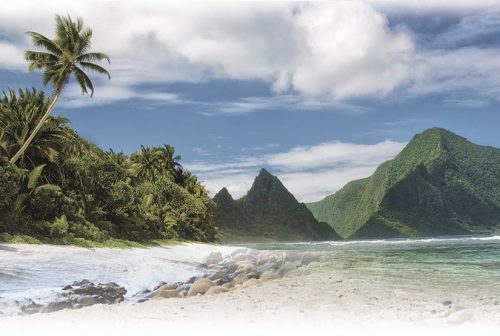
National Park of American Samoa
Located in the South Pacific Ocean – halfway between Hawaii and New Zealand – the National Park of American Samoa is the only U.S. park site located south of the Equator. The park has units on four steep volcanic islands covered by lush rainforests – Ta’ū, Ofu, Olosega and Tutuila, home to American Samoa’s capital city of Pago Pago and site of the National Park Service visitor center.
Established on October 31, 1988, the park has a lease agreement with participating villages that honors the Samoan culture of communal land ownership. The deeds of cession that the United States signed when making American Samoa a United States territory in 1900 and the American Samoan constitution provide the Samoan people a guarantee of this cultural tradition.
Each park unit has unique features. On Tutuila, the Pola Island hiking trail brings visitors to view the breathtaking Vai’ava Strait, a National Natural Landmark, on neighboring Pola Island.
Linked by a foot bridge, the islands of Ofu and Olosega are renowned for their unbleached coral reefs that are home to 250 coral reef species and 950 species of reef fish. The fine-grain, white sand beaches provide a recreational opportunity for outdoor walking.
With only three villages, Ta’ū provides visitors with opportunities to experience the traditional Samoan way of life that includes farming of breadfruit, banana, coconut and taro. Sea cliff stair steps allow hikers to climb Lata Mountain, the tallest in all of American Samoa at over 3,000 feet.
The fruit bat, also known as a flying fox, is a protected species. With a wingspan of up to three feet, it flies both at night and during the day, which means it can be seen roosting as well as flying throughout all four park units. This national park is also home to 35 different bird species.
Learn more about the National Park of American Samoa.
